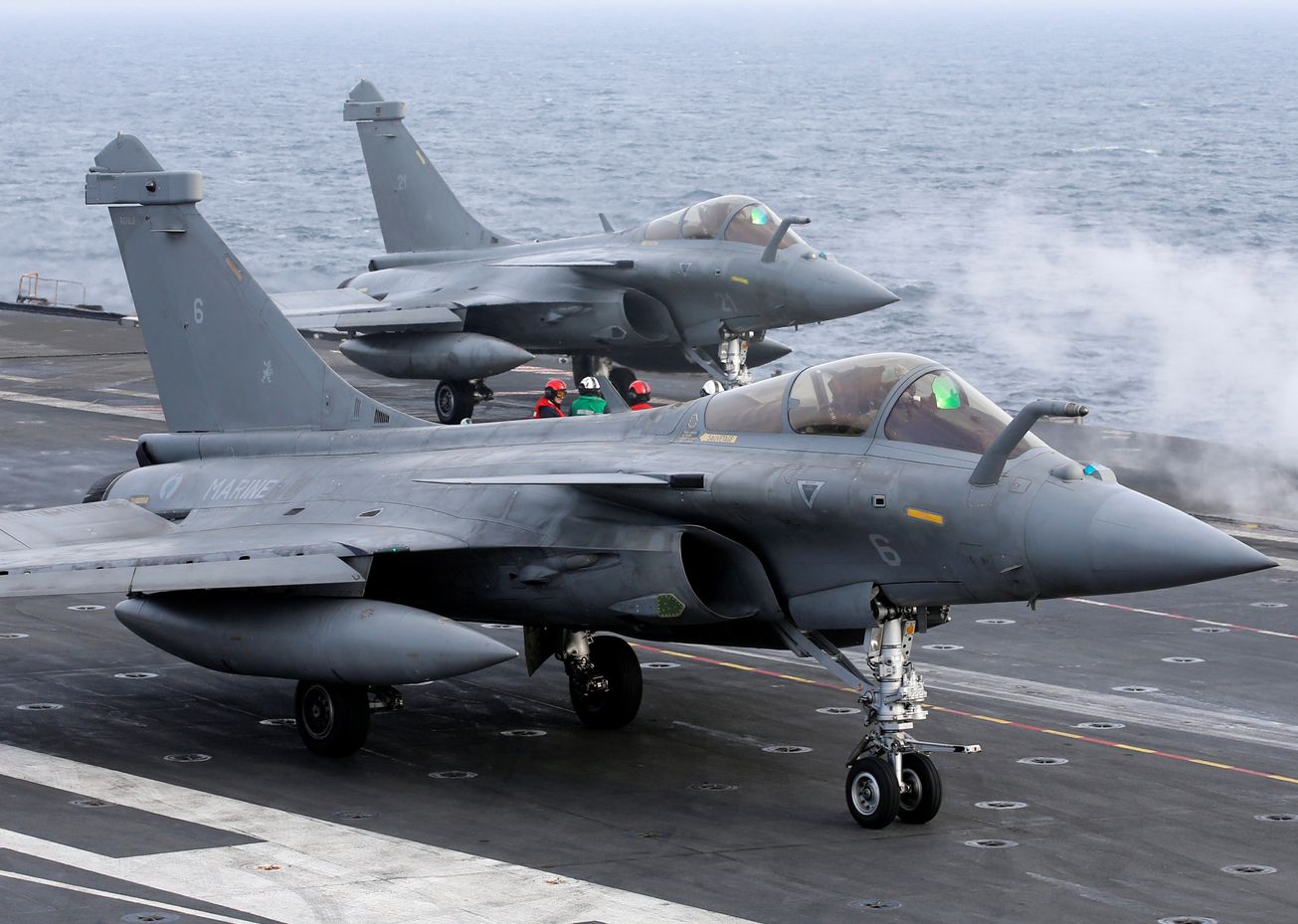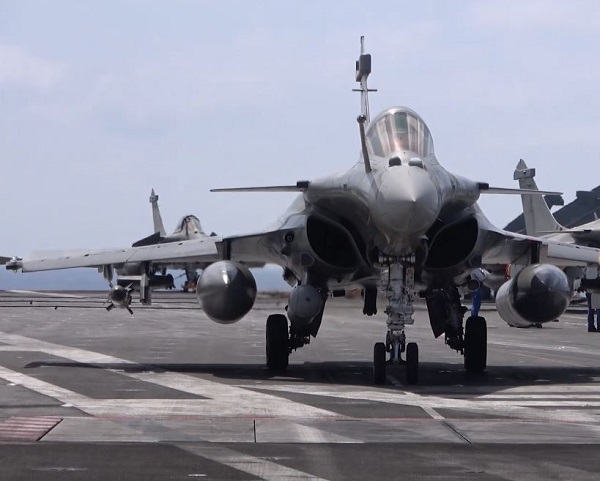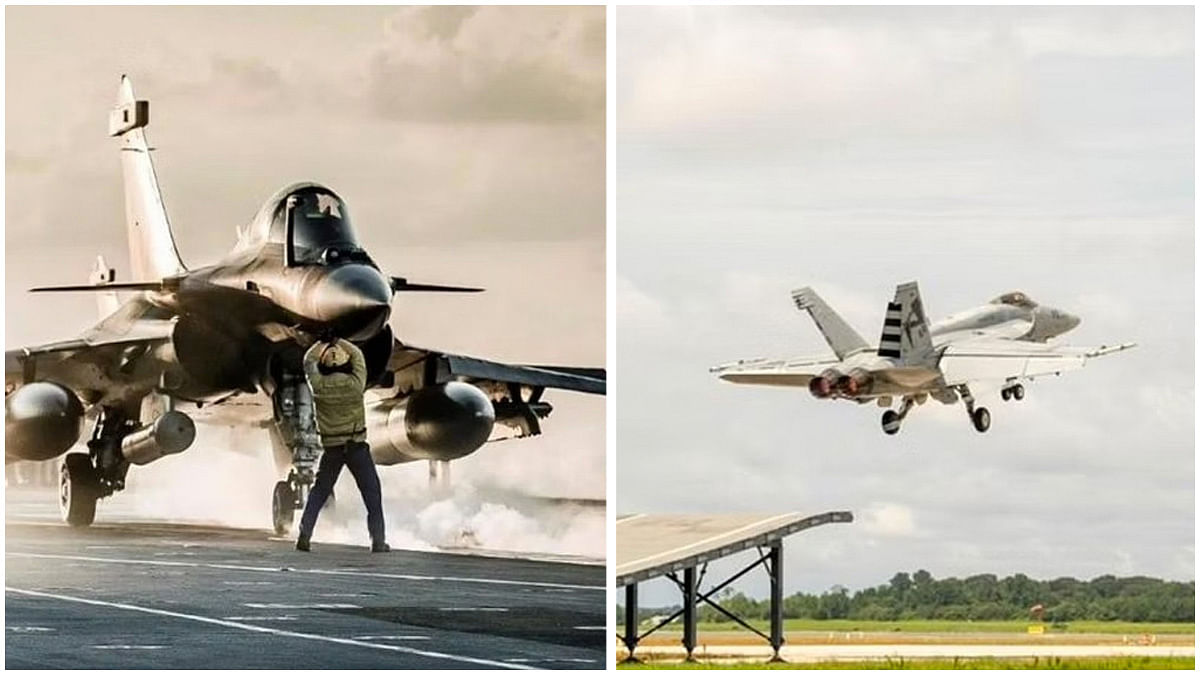France’s Rafale jets are frontrunner in race for Indian Navy contract
New Delhi: French aircraft manufacturer Dassault Aviation’s Rafale-M has emerged as the frontrunner to bag a mega contract from the Indian Navy for 27 fighters, ThePrint has learnt, leaving behind US firm Boeing’s F/A-18 Super Hornet.
Sources in the defence and security establishment said the Navy has submitted a detailed report to the defence ministry on performance of the Super Hornets and Rafale-M, which is the marine version of the fighter aircraft already in use with the Indian Air Force, during two sets of demonstration.
American firm Boeing and French manufacturer Dassault Aviation carried out operational demonstrations of the
Super Hornets and Rafale-M respectively, showcasing
ski-jumps — a crucial take-off capability — from the shore-based test facility at INS Hansa in Goa, to demonstrate their ability to operate from Indian aircraft carriers.
Refusing to get into details, sources said the report from the naval headquarters to the defence ministry mentions the “positives” only, and that Rafale-M met all criteria.
The report to the defence ministry has been sent after a detailed analysis by the naval headquarters on the performance by both aircraft. Those undertaking the tests had prepared a ‘trial report’ that was sent to the naval headquarters for detailed analysis on performance and shortlisting of aircraft.
Asked whether the lift size of India’s indigenous aircraft carrier INS Vikrant would be an issue, sources said both aircraft had to be brought up and down at a certain angle. While the wings of Super Hornets fold — unlike the Rafale — these still had to be brought up and down at a certain angle. Both aircraft also have a separate process in which the wings fold.
The design and space of the lift size has been a problem because it is understood to have been made taking the MiG 29K and the naval version of the Tejas aircraft into consideration.
The Navy currently operates the Russian MiG 29K aircraft from INS Vikramaditya. But with the commissioning of INS Vikrant, the force has been seeking more fighter jets.
The new contract is meant to be an interim arrangement because the Navy is betting on its indigenous fighter. Navy Chief Admiral Hari Kumar had Saturday
said the future of Indian naval aviation was the indigenous Twin Engine Deck Based Fighter (TEDBF), whose prototype is expected by 2026-27 and production to start somewhere around 2032.
He also said that the existing naval fighter, MiG 29K, were in limited numbers and Russian spare supplies were “also not very forthcoming”.
Fighters for IAF
Sources said the ball now was in the court of the defence ministry that will decide on the next course of action. They added that the contract is likely to be a government-to-government deal just like the earlier order for IAF’s Rafale jets.
It is learnt that the French have offered to transfer some aircraft from its own naval fleet to ensure that the Indian Navy can operate them faster. However, all fighters are likely to be bought off-the-shelf.
Sources explained that the forward movement by the Indian Navy would mean that the proposal for more Rafale jets for the IAF is also likely to gather speed. This is because it would make for a more prudent financial decision to have more numbers of aircraft, thereby bringing down on costs.
As
reported by
ThePrint earlier, the government is thinking of splitting the mega deal for 114 Multi-Role Fighter Aircraft (MRFA) for IAF. Instead of acquiring 114 fighters in one go, as was planned earlier, the government is looking at going in for an initial order of 54 aircraft for the IAF.
This would entail 18 aircraft being bought off-the-shelf from the foreign Original Equipment Manufacturer (OEM) and 36 built in India through a joint venture under Make In India.
This would be an order that will be placed with the foreign OEM directly. A follow-on order will be placed to the joint venture and this deal would be in Indian currency.
Forward movement by the Indian Navy would mean that the proposal for more Rafale jets for the IAF is also likely to gather speed.

theprint.in


 www.opex360.com
www.opex360.com

 theprint.in
theprint.in
